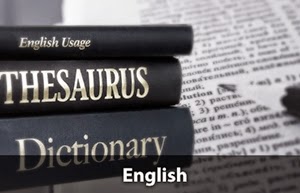Directions (Q. 176-190): Read the following passage carefully and answer the questions given below it. Certain words/phrases have been printed in bold to help you locate them while answering some of the questions.
It was in the offing. With shortages mounting across the board for water as they are for energy, it was only inevitable that the Central government would be stirred into starting a Bureau of Water Efficiency (BWE), much like the Bureau of Energy Efficiency (BEE) that was launched some years ago.
Early reports suggest that the draft norms for various sectors consuming water will be created by the BWE soon. The alarm bells have been ringing for some years now. Water availability per capita in India has fallen from about 5 million litres in the 1950s to 1.3 million litres in 2010—that’s a staggering 75 per cent drop in 50 years. Nearly 60 per cent of India’s aquifers have slumped to critical levels in just the last 15 years. Thanks to the rate at which borewells are being plunged in every city with no law to ban such extraction, groundwater tables have depleted alarmingly.
The BEE’s efforts in the last seven years have only been cosmetic. The bureau has looked at efficiency rating systems for white goods in the domestic sector and has not paid attention to the massive consumption of energy in metals manufacture, paper and textiles. These sectors are very intense in both energy and water consumption. But very little attention has been paid to the water and energy used per tonne of steel or cement or aluminium that we buy, and without significant changes in these areas, the overall situation is unlikely to change.
Use of water is inextricably interlinked with energy. One does not exist without the other. The BWE should steer clear of the early mistakes of BEE—of focusing on the ‘softer targets’ in the domestic sector. Nearly 80 per cent of fresh water is used by agriculture, with industry coming a close second. The domestic sector’s consumption of fresh water is in single digit. So, the BWE’s priority should be to look at measures that will get farmers and industrialists to follow good practices in water use. Water resources have to be made, by law, an indivisible national asset. The protection and withdrawal of this resource as well as its sustainable development are of general importance and, therefore, in the public interest. This will mean that individuals and organisations may own land but not water or the other
resources that lie below the first 20 metres of the surface of those lands. Drilling of borewells into such ‘national assets’ will have to be banned, or at the very least they must be regulated. What would be more sensible for the new water bureau to do would be to look at some of the low-hanging fruits that can be plucked, and pretty quickly, with laws that can emanate from the Centre, without the risk of either dilution or inaction from state administrations. The other tactical approach that the BWE can adopt is to devise a policy that addresses the serious water challenge in industry segments across a swathe of companies: this will be easier than taking on the more disparate domestic sector which hurts the water crisis less than industry. Implementing a law is more feasible when the concentration is dense and identifiable. Industry offers this advantage more than the domestic or the commercial sector of hotels and offices.
As for agriculture, though the country’s water requirement is as high as 80 per cent, the growing of water within the Ioop in agriculture de-risks the challenge of any perceived deficit. Rice and wheat, sugarcane are crops that need water-logging, which ensures groundwater restoration. Surface water evaporation doesn’t amount to any more than 7-8 per cent and only strengthens precipitation and rainfall. Agriculture and water need is not quite as much a threat as industry and domestic sectors that account for the rest of the 20 per cent.
The primary challenge in industry and the building sector is that no conscious legal measures have been enacted that stipulate ‘growing your own water’ with measures that will ‘put all water in a loop’ in any residential or commercial building. This involves treating all used water to a grade that it can be ‘upcycled’ for use in flush tanks and for gardens across all our cities with the polluter owning the responsibility for treating and for reuse. The drop in fresh water demand can be dramatic with such upcycle, reuse and recycle of treated water. Water by itself, in industry and the domestic sector, is not as much a challenge as pollution of water. Not enough measures exist yet to ensure that such polluters shift the water back for reuse. If legislation can ensure that water is treated and reused for specific purposes within industry as well as in the domestic sector, this will make all the difference to the crisis on fresh water.
So is the case in industry, especially in, sectors like textiles, aluminium and steel. Agriculture offers us the amusing irony of the educated urbanites dependent on
cereals like rice and wheat that consume 4000 litres of water for every kilogramme, while the farmer lives on the more nutritious millets that consume less than half the quantity.
Sugarcane consumes as much as 12,000 litres of water for a kilo of cane that you buy!
A listing of such correlations of water used by every product that we use in our daily lives will make much better sense than any elaborate rating system from the newly formed BWE. Such sensitising with concerted awareness campaigns that the new Bureau drives will impact the urban consumer more than all the research findings that experts can present.
What is important for us is to understand the life-cycle impact in a way that we see the connect between a product that we use and the resources it utilises up to the point where we bring the visible connect to destruction of natural resources
of our ecosystems.
1. How, according to the author, can the bureau sensitise the urban consumer about careful utilisation of water?
(a) By encouraging them to consume more rice instead of millets daily and, thereby, reduce the amount of water consumption
(b) By providing them more insight into the water consumption cycle of the textile, aluminium and steel industries
(c) By making them aware of the linkages between water consumption for daily activities and the resource utilization and subsequent ecological destruction associated with it
(d) By publishing research ñndings of experts in popular media whereby people gain awareness on the impact of water misuse
(e) By conducting elaborate drives which notify the urban population about the penalties levied on misuse of water resources
2. Why, according to the author, is the water consumption for agricultural activities the least risky?
(a) The proportion of water consumed for agricultural activities is much less as compared to that consumed for domestic and industrial purposes.
(b) Most farmers are aware of the popular methods of water conservation and hence do not allow wastage of water.
(c) Water is fairly recycled through groundwater restoration due to water-logging and surface water evaporation.
(d) Farmers in India mostly cultivate crops that require less amount of water.
(e) None of these
3. Which of the following is possibly the most appropriate title for the passage?
(a) Water Challenges in the New Millennium
(b) The Bureau of Water Efficiency vs the Bureau of Energy Efficiency
(c) Unchecked Urban Consumption of Water
(d) Challenges of the Agricultural Sector and Water Resources
(e) The Route to Conservation of Water Resources
4. What does ‘low-hanging fruits that can be plucked, and pretty quickly’ mean in the context of the passage?
(a) The bureau should employ the cheapest methods possible to effectively control the current situation of improper usage of water resources.
(b) The bureau should target the industrial sector as well as the domestic sector to reduce water wastage.
(c) The bureau should target the agricultural sector only for producing quick results in reducing wastage of water.
(d) The bureau should ensure that all the state officials concerned with the measures are actively involved.
(e) The bureau should start with adopting measures which are simple to execute and produce immediate results in reducing water wastage.
5. Which of the following, according to the author, is/are the indication/s of a water crisis?
(1) Many agrarian areas in the country are facing a drought-like situation.
(2) Almost three-fifths of the naturally available water has been reduced to a very critical level in a relatively short span of time.
(3) There has been a significant drop in the availability of water over the past fifty years.
(a) Only (2)
(b) Only (1) and (3)
(c) Only(3)
(d) Only (2) and (3)
(e) All (1),(2)and(3)
6. The author suggests that the Bureau of Water Efficiency devise a strategy or make laws to meet water challenges in the industrial segment rather than in the domestic segment because
(a) the industrial sector is the only one that is in a position to reduce its water consumption by a significant margin.
(b) there is comparatively less serious water misuse in the domestic sector.
(c) it would be easy to identify the consumption patterns in the industrial sector because of its density and visibility.
(d) the industrial sector would be capable of paying the fines levied by the Bureau for water misuse whereas the domestic sector would be in no such position.
(e) the industrial sector would be easier to manage in terms of making them understand the importance of water conservation.
7. Which of the following, according to the author, is/are the step/s that the Bureau of Water Efficiency can take to ensure proper utilisation of water resources?
(1) Put in place measures that ensure proper water usage
(2) Concentrate on the water consumption patterns of the domestic sector alone
(3) Monitor carefully the activity of digging borewells
(a) Only (1) and (3)
(b) Only (1) and (2)
(c) Only(1)
(d) Only (2) and (3)
(e) All(1),(2)and(3)
8. Which of the following is true about the Bureau of Energy Efficiency in the context of the passage?
(1) It failed to pay adequate attention to industries like metal, and textiles in terms of energy consumption.
(2) It focused on rating systems for efficient use of goods in the domestic sector.
(3) It mostly focused on the energy consumption in the domestic sector.
(a) Only(1)and(3)
(b) Only (1) and (2) ,
(c) Only(1)
(d) Only (2) and (3)
(e) (1),(2) and (3)
Directions (Q. 9-12): Choose the word which is most similar in meaning as the word printed in bold as used in the passage.
9. Cosmetic
(a) Enhancive
(b) Beauty
(c) Augmentative
(d) Superficial
(e) Aesthetic
10. Staggering
(a) Weaving
(b) Astounding
(c) Lurching
(d) Stumbling
(e) Unsteady
11. Conscious
(a) Unknown
(b) Mindful
(c) Self-aware
(d) Awake
(e) Alert
12. Dramatic
(a) Remarkable
(b) Moving
(c) Theatrical
(d) Histrionic
(e) Staged
Directions (Q. 13-15): Choose the word which is in MOST OPPOSITE in meaning of the word printed in BOLD as used in the passage.
13. Intense
(a)Smooth
(b)Serious
(c)Low
(d)Diluted
(e)Jovial
14. Tactical
(a) unplanned
(b) uniform
(c) devious
(d) premeditated
(e) deformed
15. Inevitable
(a) Certain
(b) Unforeseeable
(c) Unavoidable
(d) Inescapable
(e) Predictable
1. c
2. a
3. e
4. b
5. a
6. d
7. e
8. c
9. c
10. b
11. e
12. d
13. d
14. e
15. a
This post was last modified on November 27, 2017 9:04 am





